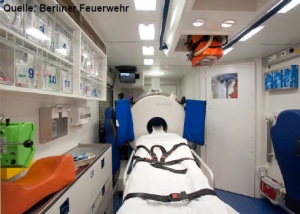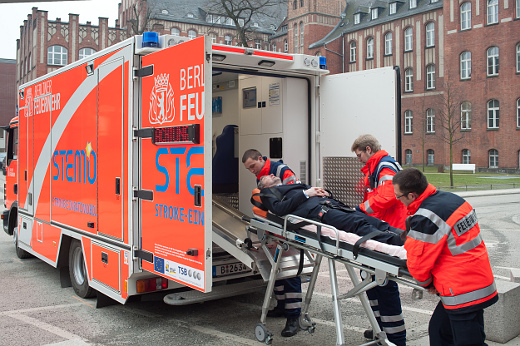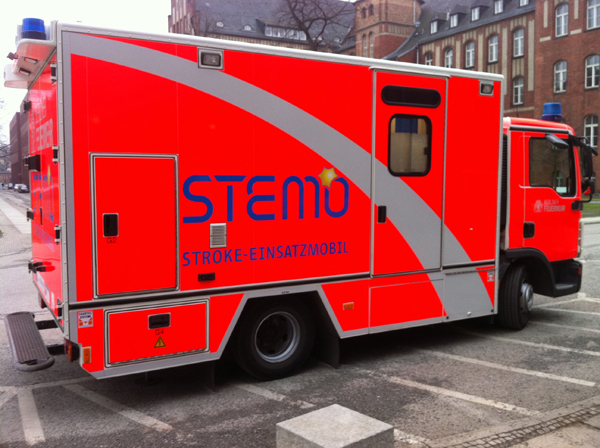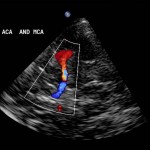Published in JAMA last month the Prehospital Acute Neurological Treatment and Optimization of Medical care in Stroke Study (PHANTOM-S; conducted in Berlin, Germany) studied 6182 patients randomized to 1) receiving the standard prehospital care (stroke alert and rapid transport only) versus 2) receiving care via a STEMO (Stroke Emergency Mobile).
Let’s skip to the results: “Compared with usual care, the use of ambulance-based thrombolysis resulted in decreased time to treatment without an increase in adverse events. Further studies are needed to assess the effects on clinical outcomes.”
So, right off the bat we know this study only focused on analyzing time to drug and adverse events/mortality. The study was not designed to analyze outcomes. It’s a fair hypothesis to say that equipping an ambulance with a CT scanner will speed up the process, however it’s undetermined whether or not the time saved will improve outcomes for a stroke patient.
A specialized ambulance, called a STEMO, was in-service in the city of Berlin only on certain weeks. It was equipped with a small CT scanner, telemedicine equipment, laboratory equipment, a neurologist, a radiology technician, and a paramedic. When a stroke call was received, the STEMO was deployed to the scene in lieu of a standard ambulance. On scene, the patient was fully evaluated for stroke prior to transport. If the neurologist reached a diagnosis of ischemic stroke, TPA was administered prior to transport. Below are pictures of the STEMO:
The STEMO achieved a reduction of about 25 minutes in time from call to drug delivery. Approximately 10% more patients were able to receive TPA by giving it in the field versus in-hospital. Impressive reductions in time but again, still no empirical data that this level of resource allocation improves patient outcomes.
Is this foreshadowing the future of American EMS? Perhaps. Would you be surprised to know that American EMS systems are already deploying a vehicle similar to the STEMO? Enter the $1.1 million Mobile Stroke Unit out of the University of Texas – Houston and operated in conjunction with the Houston Fire Department and Houston-area EMS agencies and emergency receiving hospitals.
A clinical trial is scheduled to run over the next 3 years to evaluate this particular Mobile Stroke Unit. Could this well be the future for urban EMS? Very interesting…















